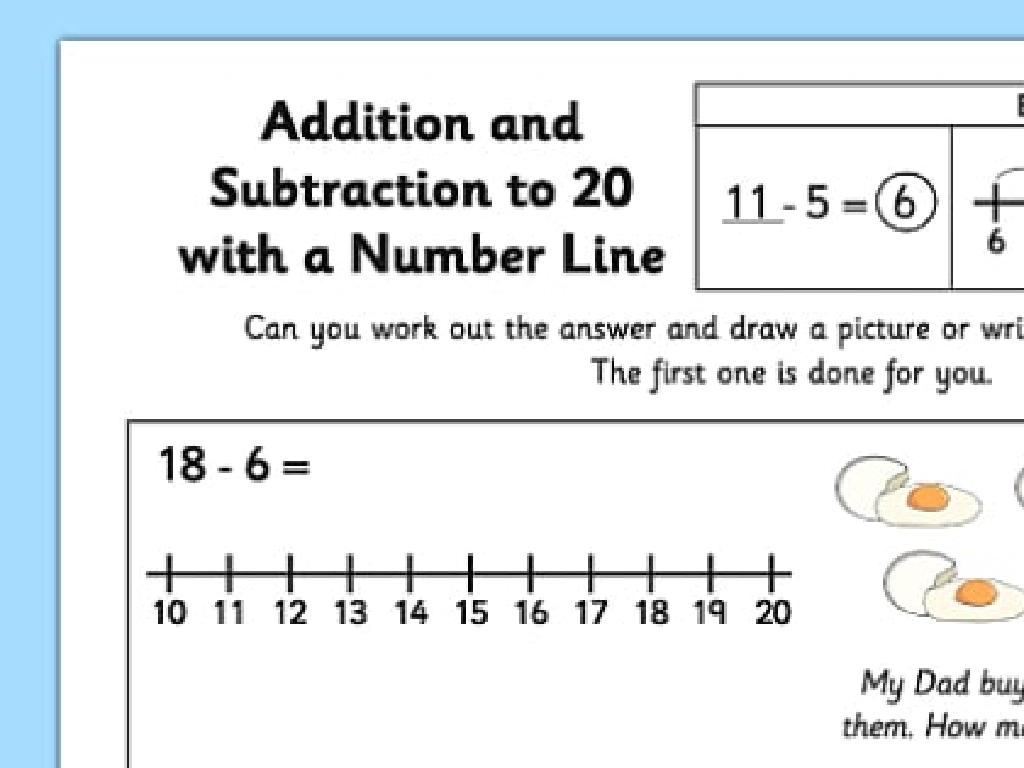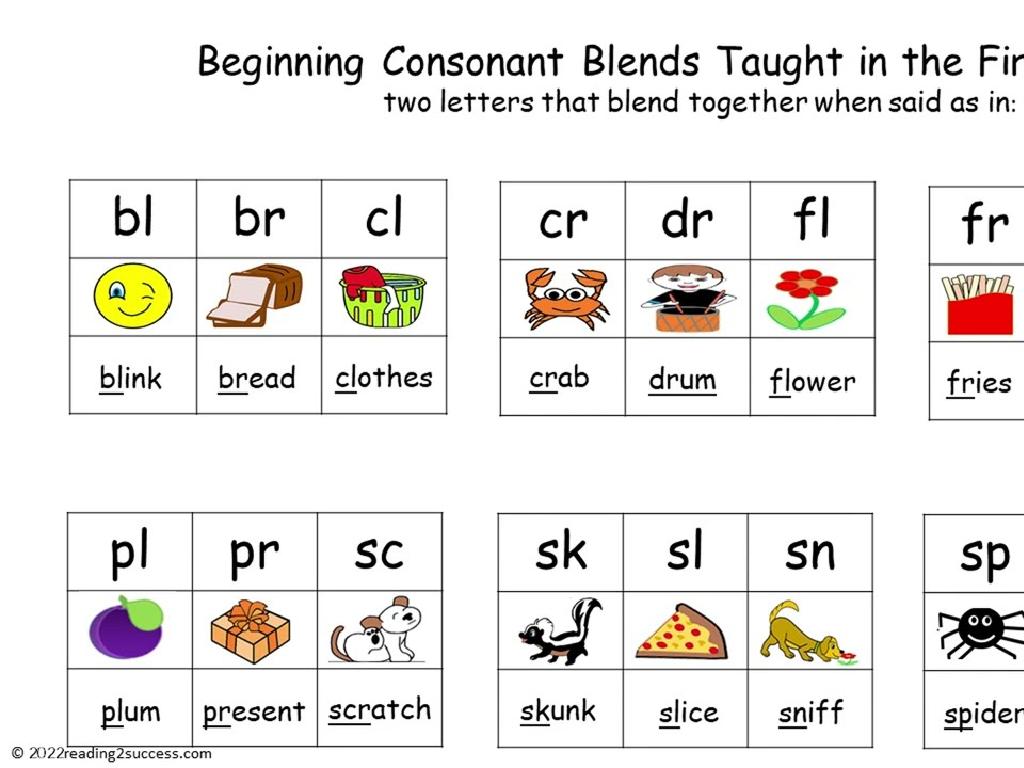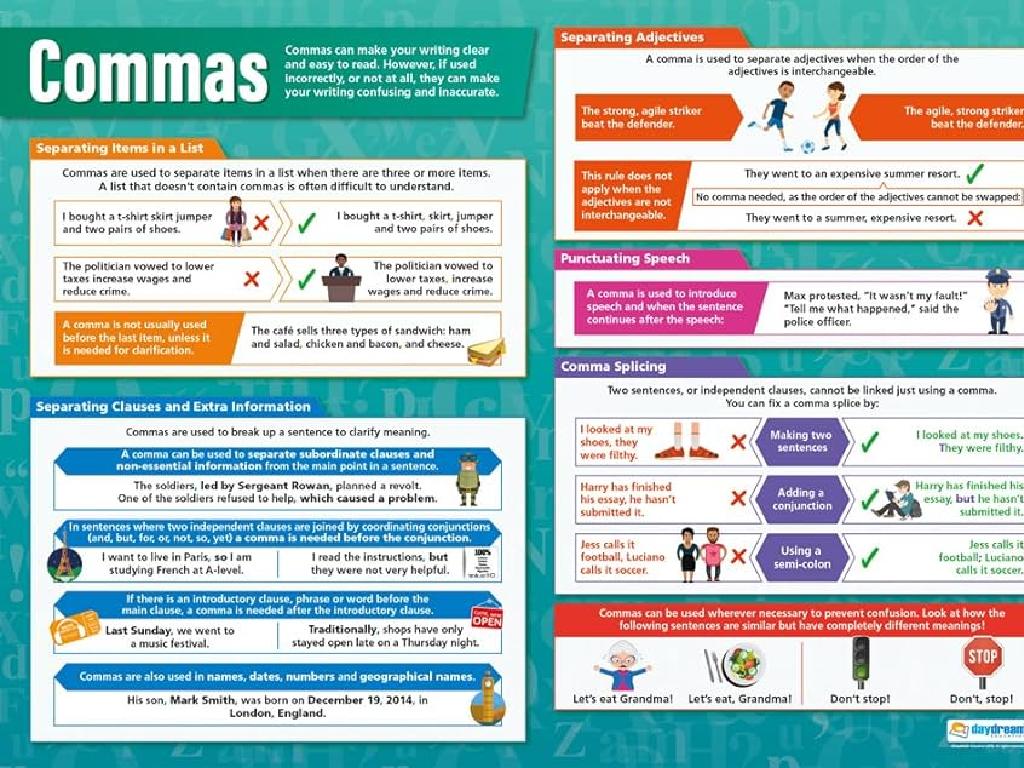Identify Transitive And Intransitive Verbs
Subject: Language arts
Grade: Sixth grade
Topic: Verb Types
Please LOG IN to download the presentation. Access is available to registered users only.
View More Content
Transitive & Intransitive Verbs
– Verbs: Action or state of being
– Transitive verbs need an object
– Example: ‘She kicked the ball.’ ‘Kicked’ needs ‘ball’ to make sense.
– Intransitive verbs stand alone
– Example: ‘He sleeps.’ ‘Sleeps’ does not need an object.
– Knowing the difference aids writing
|
This slide introduces the concept of transitive and intransitive verbs, which are both important components of sentence structure. Verbs are words that express action or a state of being. Transitive verbs require an object to complete their meaning, while intransitive verbs do not. Understanding the difference is crucial for students as it helps them construct grammatically correct sentences and improves their writing skills. Provide examples of both types of verbs and encourage students to create their own sentences. This foundational knowledge will be built upon in future lessons on more complex sentence structures.
Understanding Verbs: Transitive & Intransitive
– Verbs: Words of action or state
– Verbs express actions like ‘run’ or states like ‘exist’
– Verbs show what subjects do
– ‘The dog runs.’ The verb ‘runs’ tells us the dog’s action
– Examples: ‘run’, ‘jump’, ‘eat’
– ‘She eats an apple.’ ‘Eats’ is the verb showing action
– Focus: Transitive & Intransitive verbs
|
Begin with a quick review of what verbs are, emphasizing that they are words that express action or state of being. Use familiar and simple examples like ‘run’, ‘jump’, ‘eat’, ‘think’, and ‘play’ to illustrate the concept. Make sure to clarify that verbs are essential in sentences as they tell us what the subject is doing. After this review, transition to explaining the difference between transitive and intransitive verbs, setting the stage for students to identify and use them correctly in sentences. This foundational understanding will be crucial for the upcoming lessons on verb types.
Transitive Verbs: Action with a Purpose
– Transitive verbs need an object
– Verbs that transfer action to an object
– Example: ‘She kicked the ball.’
– ‘She’ performs action, ‘ball’ receives it
– ‘Kicked’ requires an object ‘ball’
– Without ‘ball’, ‘kicked’ feels incomplete
– Completes the action’s meaning
|
This slide introduces transitive verbs, which are action words that require an object to receive the action. Use the example ‘She kicked the ball.’ to illustrate how the verb ‘kicked’ is transitive because it acts on the object ‘ball.’ Explain that without an object, the meaning of a transitive verb is not complete. Encourage students to think of other examples of transitive verbs and the objects they act on. This will help them understand the concept of direct objects and how they are essential to the meaning of transitive verbs. Have students practice by identifying transitive verbs in sentences and determining the objects they affect.
Understanding Intransitive Verbs
– Define intransitive verbs
– Verbs that don’t require an object to complete their meaning
– Example: ‘He sleeps’
– ‘He sleeps’ fully expresses an action without further detail
– ‘Sleeps’ needs no object
– Recognizing intransitive verbs
– Identify verbs that make sense alone, without an object
|
In this slide, we introduce the concept of intransitive verbs to the students. An intransitive verb is one that does not need a direct object to complete its meaning. The action of the verb is done by the subject and does not pass to an object. For example, in the sentence ‘He sleeps,’ the verb ‘sleeps’ does not require an additional object to make sense; the subject ‘He’ is doing the action. To recognize intransitive verbs, students should look for verbs that make complete sense without the addition of an object. Encourage students to find more examples of intransitive verbs in their reading or think of actions that do not require an object.
Identifying Transitive Verbs
– Finding transitive verbs
– Transitive verbs are action verbs that have an object.
– Verb followed by noun/pronoun
– For example, in ‘She plays the piano,’ ‘plays’ is followed by ‘piano,’ the object.
– Ask ‘What?’ or ‘Whom?’
– After the verb ‘sends,’ ask ‘sends what?’ Answer: ‘sends a letter,’ making ‘sends’ transitive.
– Practice with examples
– ‘He answered the question.’ Ask ‘answered what?’ The answer is ‘the question.’
|
This slide introduces students to the concept of transitive verbs. Start by explaining that transitive verbs are action verbs that require an object to receive the action. Teach students to identify the object by looking for a noun or pronoun that follows the verb. To confirm if a verb is transitive, ask ‘What?’ or ‘Whom?’ after the verb to see if there is an object that answers the question. Provide several examples and encourage students to practice by identifying transitive verbs in sentences. This will help them understand the direct relationship between the verb and its object in a sentence.
Identifying Intransitive Verbs
– Recognize intransitive verbs
– Verbs that don’t need an object to complete their meaning
– No direct object follows
– If removing the word after the verb makes sense, it’s likely intransitive
– Not all verbs with followers are transitive
– Words after verb could be prepositional phrases, not objects
– Examples of intransitive verbs
– ‘He sleeps soundly’ – ‘sleeps’ doesn’t need an object
|
When teaching students to identify intransitive verbs, emphasize that these verbs do not require a direct object to convey a complete thought. Explain that a direct object receives the action of the verb, but in the case of intransitive verbs, the action does not pass onto an object. Provide examples and non-examples to illustrate this point. For instance, in the sentence ‘She sings beautifully,’ ‘sings’ is intransitive because there is no object receiving the action. Encourage students to look for the action in a sentence and ask ‘what?’ or ‘whom?’ to determine if there is a direct object. This slide should help students understand that the presence of additional words following a verb does not necessarily make it transitive.
Let’s Practice: Transitive vs. Intransitive Verbs
– Identify verbs in sentences
– Determine verb types
– Is the verb acting on an object (transitive) or not (intransitive)?
– Pair up for discussion
– Share thoughts with a classmate and compare findings
– Class review of answers
– We’ll go over the answers together in class
|
This slide is designed for a class activity to practice identifying transitive and intransitive verbs. Students should first work independently to locate the verbs in provided sentences and then decide whether each verb is transitive (has a direct object) or intransitive (does not have a direct object). Afterward, they will pair up with a classmate to discuss their answers, fostering peer learning and collaboration. Finally, the class will come together to review the answers, allowing for a comprehensive understanding of the concept. As a teacher, prepare a list of sentences with a mix of transitive and intransitive verbs. Be ready to provide guidance and clarification during the class review. Encourage students to explain their reasoning during discussions to deepen their understanding.
Class Activity: Verb Hunt
– Find verbs in a favorite book
– Write the sentence with the verb
– Underline the verb in the sentence
– Explain verb type: transitive or intransitive
– Transitive verbs take an object, intransitive do not. Example: ‘She sang a song’ (transitive), ‘He sleeps’ (intransitive).
|
This activity is designed to help students identify and differentiate between transitive and intransitive verbs through practical application. Provide students with examples of both types of verbs and explain that transitive verbs perform an action on an object, while intransitive verbs do not. Encourage students to look for context clues in the sentence that indicate whether a verb is transitive or intransitive. For instance, if they can ask ‘what?’ or ‘whom?’ after the verb and get an answer, it’s likely transitive. Have students share their sentences and explanations with the class to foster a collaborative learning environment. Possible variations of the activity could include working in pairs, creating a classroom verb chart, or even acting out the verbs for a kinesthetic learning experience.
Conclusion & Homework: Verb Types
– Summarize transitive vs. intransitive verbs
– Transitive verbs require an object; intransitive do not.
– Homework: Write 10 mixed verb sentences
– Use both verb types in your sentences.
– Identify verbs in your sentences
– Underline the verbs and label them as transitive or intransitive.
– Share your sentences next class
|
As we wrap up today’s lesson, ensure students can differentiate between transitive and intransitive verbs. Transitive verbs perform an action on an object, while intransitive verbs do not. For homework, students will write 10 sentences that include a mix of both verb types. They should practice identifying and labeling each verb in their sentences. This exercise will reinforce their understanding and prepare them for a productive discussion in the next class. Provide examples to clarify any confusion and encourage creativity in their sentence formation.





